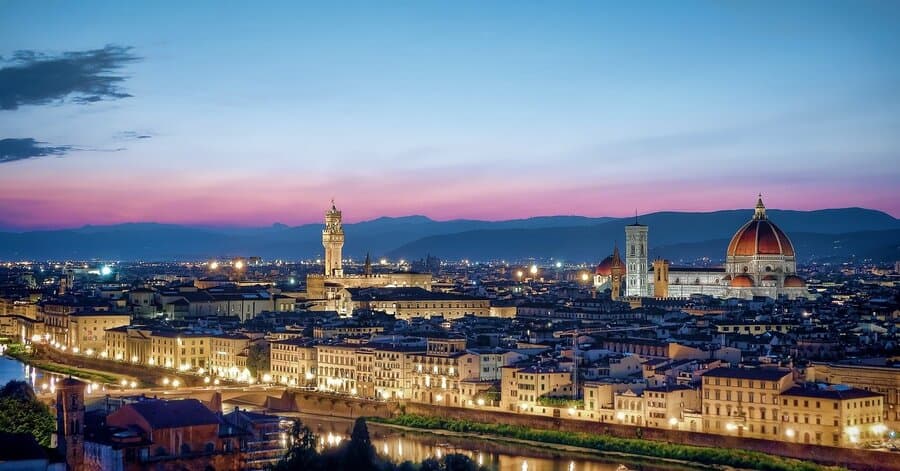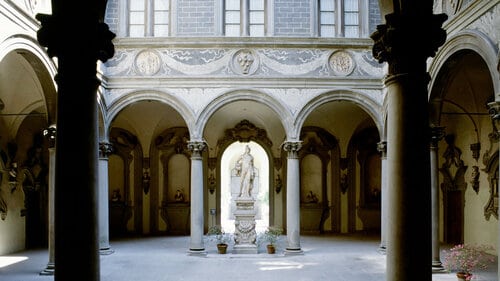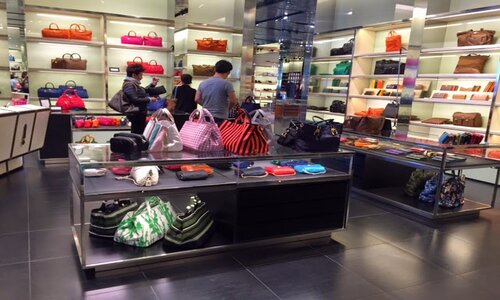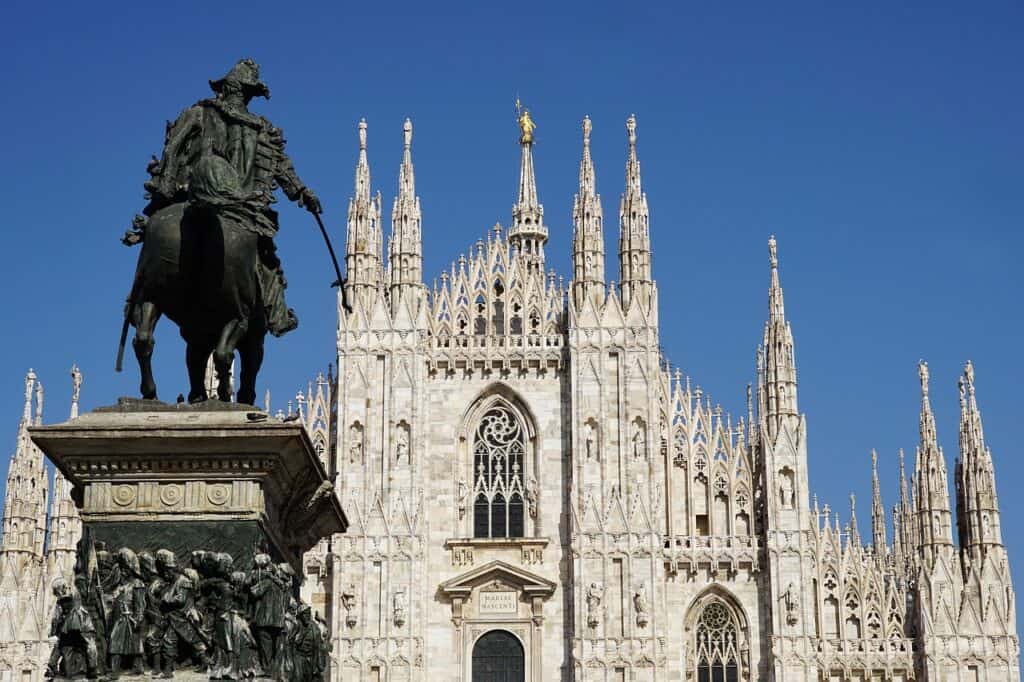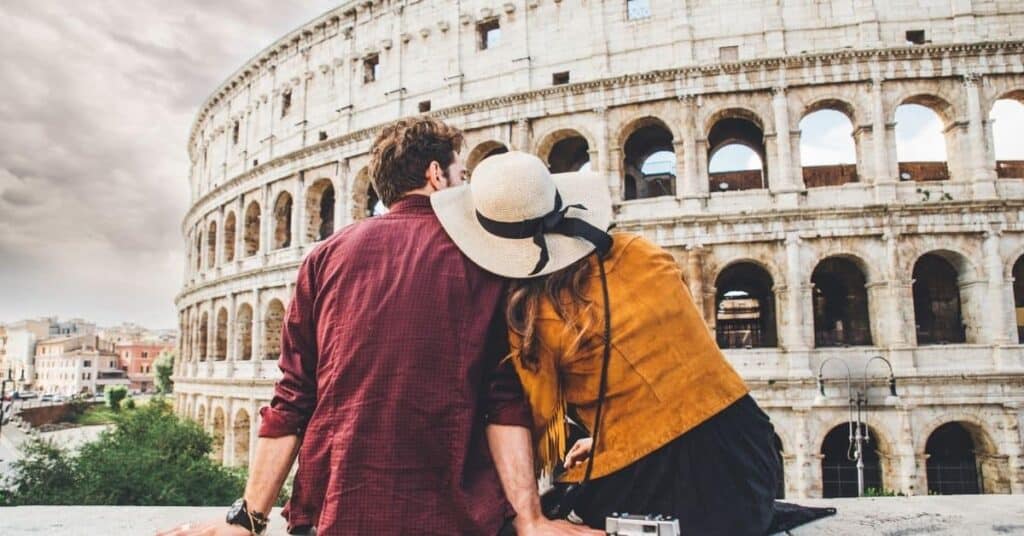Florence is the beautiful cultural city of Italy. The best place to experience Renaissance art, architecture, and monuments of Italy all in one place. Friendly city for adults, teens, children, solos, and with friends. Check out the best things to do in Florence, Italy here for your ultimate Florence trip.
Top Florence Attractions
Meetup with locals at Piazza Della Signoria
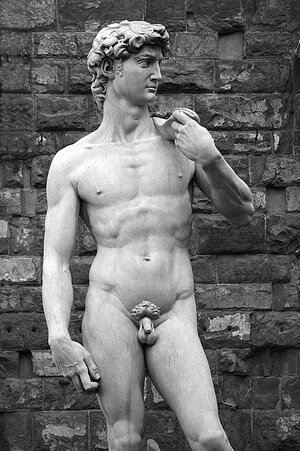
Piazza Della Signoria is one of the most significant sites in Florence. It’s a public square where people meet and gather on a daily basis. It has been the political heart of Florence city for many centuries. You can observe the leftovers of the past civilizations as you pass by the Piazza Della Signoria. There are plenty of tours available that can offer you guides to get to know all the important stuff about this amazing site in Florence.
Visit Florence Baptistery (Battistero di San Giovanni)
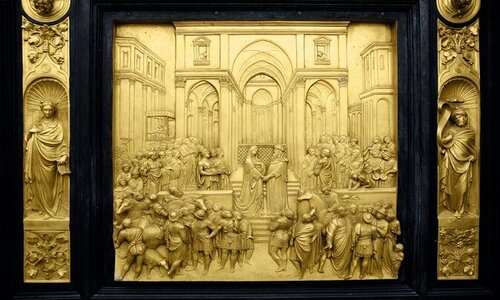
From any perspective, inside or out, the 12th century octagonal baptistery is a quintessential masterpiece. Its marble façade, the multifaceted mosaics of its inside, and the fine arts. In any case, the sublime bronze boards that Ghiberti made for the entryways confronting the house of God trump them all. No place has bronze been shown with such stunning articulation as in these Gates of Paradise. For a clearer view of the fortunes that have been made for baptistery, visit the Museo dell Opera del Duomo.
Art show at Uffizi Galleries (Gallerie degli Uffizi)
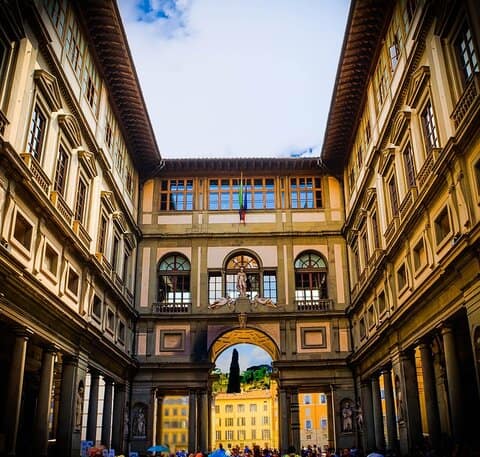
At last, to look at perhaps Botticelli’s best piece: The Birth of Venus. We’d suggest saving somewhere around three hours to explore the horseshoe-molded exhibition. The actual scene is captivating. Worked in the sixteenth century and planned by Italian painter Giorgio Vasari. The broadening corridors, direct segments, and customary pediments all add to the traditional plan. An ideal blending to the astounding fine art housed inside its dividers.
The architecture of Florence Duomo (Cattedrale di Santa Maria dei Fiori)
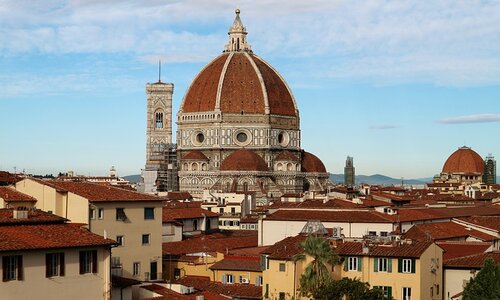
You probably know or heard of this renowned arch. It was the biggest in the world until 1881 and, as long as you wouldn’t fret 463 stages in addition to some restricted spaces, scrambling up to the lamp at the actual top of the construction will take you to the most noteworthy point in focal Florence. Not yet exhausted? Head to the adjoining Giotto’s Campanile (chime tower) for one more terrific perspective on the city and the actual Duomo.
Palazzo Vecchio
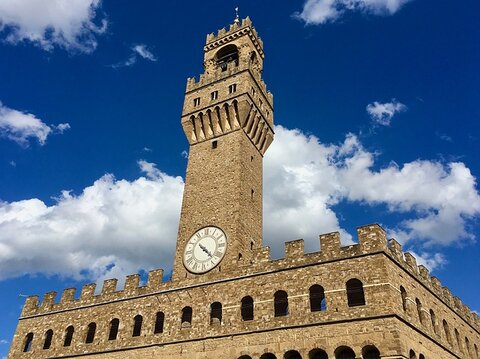
The Old castle is swarming with grand bits of fine art and rooms brimming with frescoes. In this gallery, you can see Dante’s demise cover and even leave on a visit that drives you through the mysterious sections into the royal residence. Ensure you climb the pinnacle during your visit. In transit up to the top, you’ll have the chance to see the prison cells. The famous Savonarola was caught before he was executed in the Piazza in front of the structure.
Observe some fine art at Accademia Gallery (Galleria dell’Accademia)
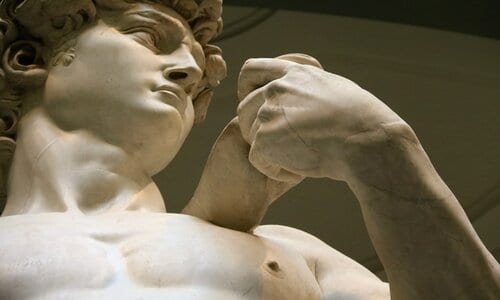
There are more memorable masterpieces in the Galleria dell’Accademia than you’ll discover in most whole urban communities. This gallery by all accounts flaunts David. Look at the man that 26-year-old Michelangelo cut out of a solitary deserted square of marble. Point by point directly down to the veins in his arm. It’s one of unquestionably the must-finds in Florence, regardless of whether it expects you to hang tight in line for a little – it’ll be certainly worth the selfie with David.
Piazzale Michelangelo
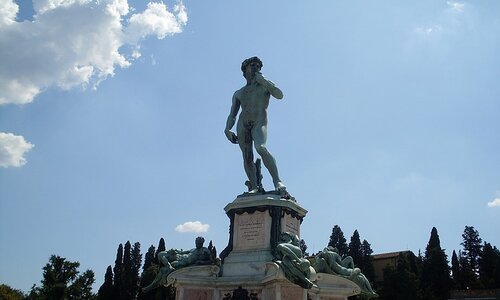
Around the Piazzale Michelangelo area, you’ll discover trucks spilling over with gifts and buskers. Looking over the ocean of earthenware is clearly an extraordinary scene. In case you’re fortunate, a decent road performer will truly set the state of mind. You can have tour package to visit this historical scenic landscape combined with other famous places nearby. Such as Palazzo Vecchio, Uffizi and Duomo are located close to the Piazzale Michelangelo.
Pitti Palace (Palazzo Pitti)
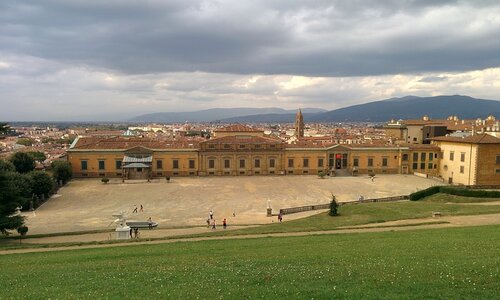
Located on the Southern side of the River Arno, the Palazzo Pitti has been luring visitors since the 14th century as a fine demonstration of Renaissance design. An excellent square sits at the front of the royal residence. Albeit when home to Italian eminence and incredible families, for example, the Medici’s, the castle presently remains as the biggest gallery complex in Florence. Inside the castle, there is a bunch of various exhibitions that are generally luxuriously beautified. Yet additionally, contain a large group of Renaissance fine art. Other notable craftsmen highlighted incorporate Titian, Rubens, Caravaggio, and Veronese.
Join the party at Piazza Della Repubblica
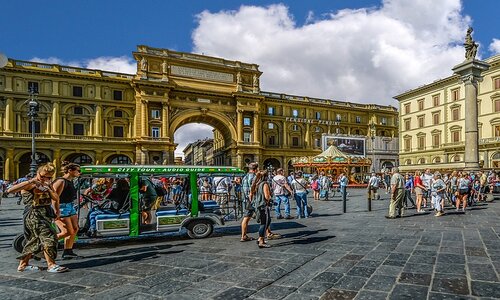
Another remarkable square in Florence is Piazza Della Repubblica in the heart of the old city area. It was at the focal point of the city in the Roman era and also later in the Middle Ages. Homeland to Piazza del Mercato Vecchio and the Ghetto. During any season, spring, summer, harvest time, and winter, there is continually something going on in Piazza Della Repubblica. Specialists, painters, bubble craftsmen, and surprisingly a red sparkling carousel emanate a great deal of nostalgic appeal here. In the evening there is unrecorded music, best appreciated in the encompassing eateries and bistros.
Pass by the famous Ponte Vecchio
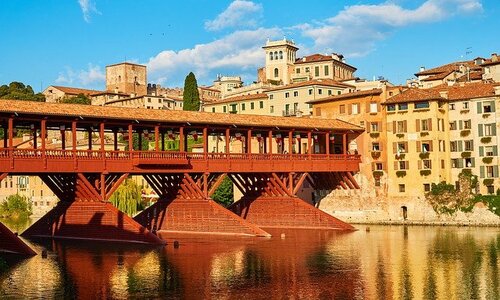
Florence is brimming with popular structures and the Ponte Vecchio is an amazingly well-known and old extension. Crossing over the river Arno, the Vecchio Bridge is notable for the enormous number of shops. Wander onto this fabulous design and take a visit at the different shops and sellers. You will discover workmanship vendors, goldsmiths, and trinket shops. Besides strolling on the actual scaffold additionally stroll along the Corridoio Vasariano to see the outside of the Ponte Vecchio and its great house-like connections.
Walk over an amazing Ponte Santa Trinita Bridge
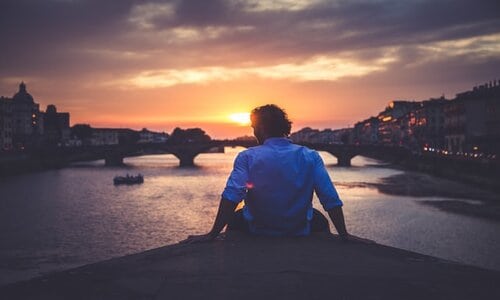
Ponte Santa Trinita, or Saint Trinity Bridge, associates the two banks of Florence’s Arno River and offers unhampered perspectives on the Ponte Vecchio. The scaffold was remade with its unique materials in 1958 after its obliteration during World War II.
Climb at Florence Santa Croce Basilica (Basilica di Santa Croce)
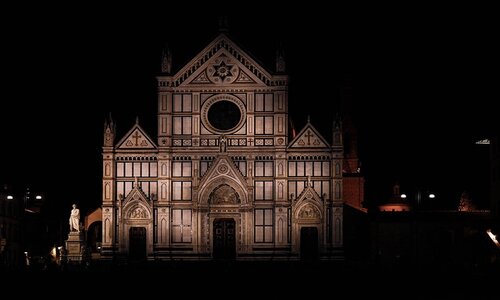
While the Cathedral of Florence flaunts huge size, the Basilica of Santa Croce is genuinely wonderful and welcoming. Built at a comparable chance to the Duomo, it additionally includes a front veneer that incorporates pink, green, and red marble poly chrome boards. They appear differently in relation to the white stone. Installed in the Piazza di Santa Croce, the Basilica takes notable position. Besides the remarkable exterior, the interior is home to the burial places of probably the most powerful Renaissance specialists and researchers in the world.
Attend the great Art show at Palazzo Strozzi
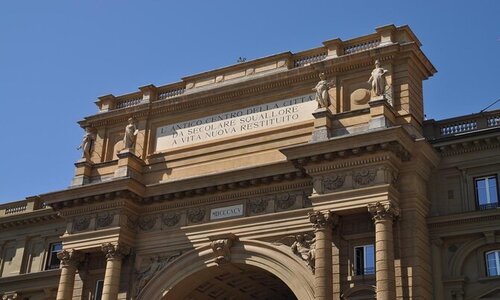
One of Florence’s tricks of the trade, Palazzo Strozzi is a delightful, unsupported Renaissance palazzo with a goal-oriented contemporary craftsmanship program. Regardless of whether it’s Carsten Holler’s most recent exploratory piece or a Marina Abramovic review, Palazzo Strozzi continually astounds through imaginative, regularly intuitive, displays. Albeit the notable design stays flawless, the exhibition space inside the historical center is completely current and appropriately redesigned for craftsmanship shows. Most displays require early bookings, and the shop sells superb made-in-Florence gifts.
Brunelleschi’s Dome (Cupola del Brunelleschi)
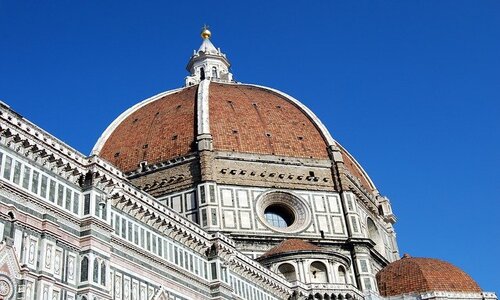
Brunelleschi’s octagonal vault on top of Florence’s Santa Maria del Fiore Cathedral required 16 years to fabricate and, at 44 meters wide, is one of the world’s biggest brickwork arches. You can respect the sixteenth century Final Judgment frescoes by Giorgio Vasari and Federico Zuccari that enrich within the arch and climb the 463 stages to the top for all-encompassing perspectives from the light sitting above the noteworthy focus. The Opera del Duomo gallery, simply behind the congregation, holds an intriguing scale model of Brunelleschi’s vault just as Lorenzo Ghiberti’s unique bronze baptistry entryways (copies are on the baptistry outside). You can hire a guide or can buy a package to gain further knowledge.
Entertain yourself with a race show at Palio of Siena (Palio di Siena)
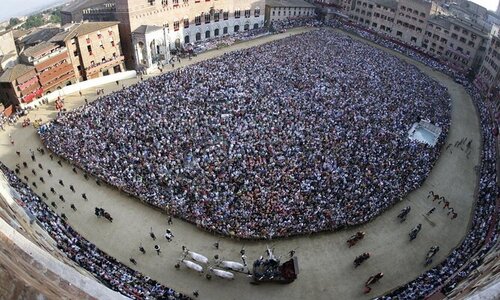
Every year in July and August, Piazza del Campo is shaped to a racetrack. Most visits additionally take in the engaging celebrations encompassing the Palio, including the parades of local people decked out in middle age clothing. In the event that you can’t come to see the race, pick a visit that stops at a neighborhood Contrada Museum and an Oratory to get a brief look into the set of experiences that encompasses the festival. Il Palio visits regularly stop in neighboring San Gimignano or remember wine sampling for the Chianti open country.
Let your soul be free at San Miniato al Monte
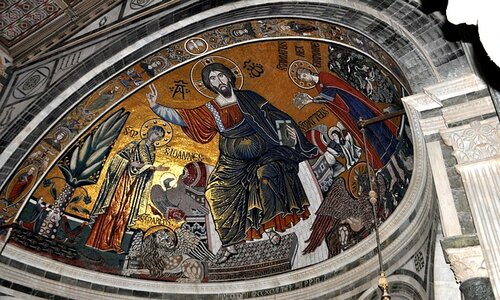
Found on a height, on a slope on the furthest side of the Arno River, the San Miniato al Monte is an eye dazzling church that has a phenomenal front exterior that resembles Florence Cathedral. On the off chance that you go for an opportunity to stroll to the congregation and bordering cloister, you will be remunerated with staggering perspectives across to the old focal point of Florence – From here you can see the grand Duomo and the Palazzo Vecchio. Besides the perspectives, the actual congregation is really breathtaking with a white and green marble front exterior. The inside is similarly brightening and elements some stunning frescos, fine art, and marble sections. Besides, there is plenty of old craftsmanship on the dividers and a funerary landmark to Cardinal James.
Get a sky view from Giotto’s Bell Tower (Campanile di Giotto)
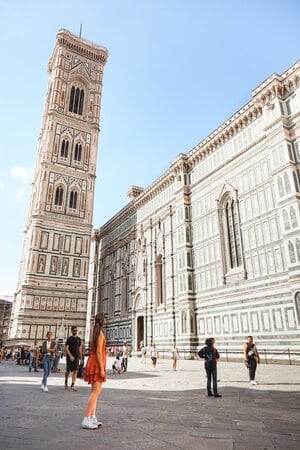
Many individuals accept that Giotto’s Campanile is associated with the Duomo anyway it is a different structure by its own doing. This construction is a genuine magnum opus of Gothic engineering and is one of the most prestigious plans in the city. Split into five unmistakable levels, the outside of the pinnacle highlights polychrome marble enhancement that is likewise present on the Duomo in splendid green and pink tones. Developed in 1334 through 1359, the structure was planned by the renowned craftsman Giotto however wrapped up by Talenti who added the last levels after Giotto passed on in 1343. Plenty of models, work of art, and finished boards cover the pinnacle, and it is a genuine show-stopper of Renaissance workmanship. Besides the improvement, you can likewise climb the 414 stages in the pinnacle for fabulous perspectives on Florence and the Duomo.
Travel through time at Basilica of Santa Maria Novella (Basilica di Santa Maria Novella)

This thirteenth-century church is one of the main Gothic-style structures in Florence and merits a spot on each explorer’s schedule. The inside holds valuable showstoppers including Giotto’s Crucifix, Masaccio’s The Trinity, and Ghirlandaio’s frescoes in the Tornabuoni Chapel – all financed by the main noteworthy Florentine families. The congregation was based on the site of ninth-century rhetoric and required 80 years to finish before its sanctification in 1420. Insides include astute and agreeable plans to stretch the space, just as fine showstoppers brought about by experts of the time. You shouldn’t miss a chance to visit this historical destination while you stay in Florence.
Piazza Santa Croce
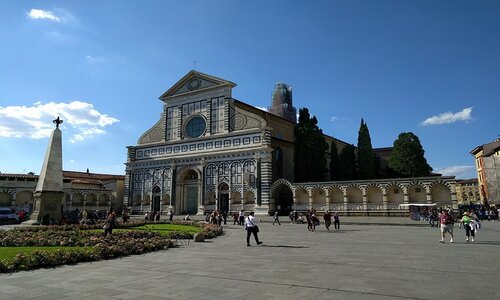
The congregation of Santa Croce is one of the most significant holy places in the city. The place is also called Pantheon of Florence, not due to its design, but since in Santa Croce there are burial chambers of numerous Italian characters. Machiavelli, Michelangelo, Galileo Galilei, Gioachino Rossini, and Guglielmo Marconi are only a couple of the celebrities who have tracked down their last resting place here. Basilica di Santa Croce was built in 1294 by Arnolfo di Cambio and today it stands among the most attracted Gothic churches in Florence. The square before the congregation, where you will discover comfortable bistros and eateries, is likewise worth seeing.
Medici Riccardi Palace (Palazzo Medici Riccardi)
This is one more Renaissance royal residence that was underlying the mid-late fifteenth century for the top of the well-to-do Medici banking family. You can visit the royal residence and meander its numerous corridors, see the all-around protected inside stylistic layout and like what life has probably been similar to for this privileged family.
Make a journey to the past at Dante House Museum (Museo Casa di Dante)
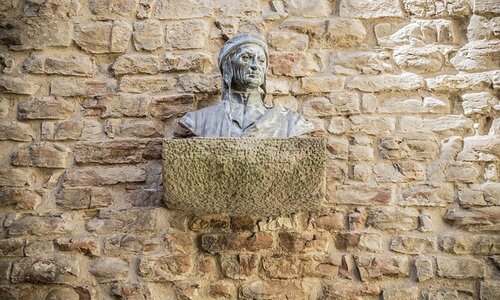
As indicated by neighborhood legend, in a progression of crouched houses close to Torre Della Castagna stands the origination of Dante Alighieri, brought into the world in 1265. Modified in the twentieth century utilizing recorded references, Dante’s home, situated in the core of archaic Florence, is currently a gallery and focus of study. It features the life and work of the man himself, one of Italy’s most splendid masterminds. The directed visits and studios walk guests through features of the artist’s life.
Medici Chapels

Medici Chapel is the second biggest vault of Florence and mostly partly ignored – yet it shouldn’t be. From floor to roof, this excellence is inundated with marble and gems like in movies. Also, advance toward the more modest house of prayer. You will see the absolute most lovely sculptures cut by as a matter-of-fact Michelangelo. The most awesome aspect? You might even get this spot all to yourself since it’s not ordinarily on the best ten records. Or you can just simply buy a package.
Orsanmichele Church and Museum (Chiesa e Museo di Orsanmichele)
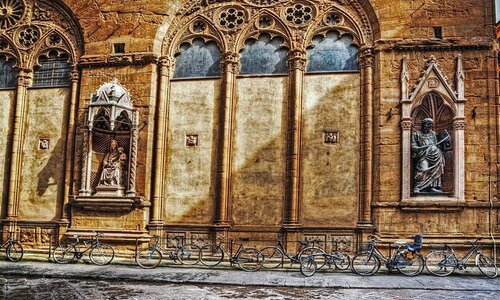
The overwhelmingly beautiful structure was designed and engineered in 1337 as a grain store for the people. Toward the end of the 1400s, the loggia on the ground floor was shut in and turned into a congregation. Then decorated with an impressive sanctuary in marble and mosaic by Andrea Orcagna. The room on the primary floor, reached through an overhead way joining the structure to the Palazzo dell’Arte della Lana. There are plenty of tour guides and packages available in Florence to help you discover more about the Orsanmichele Church.
Walk on the Medici’s private walkway at Vasari Corridor (Corridoio Vasariano)
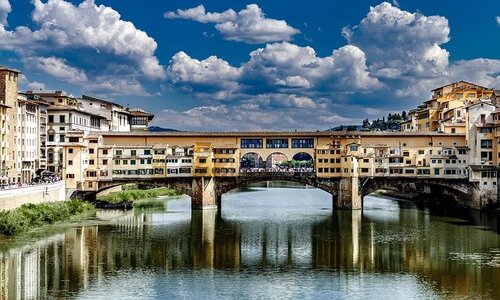
The Vasari Corridor was initially built as a private walkway for Cosimo de Medici from the Palazzo Pitti to the Palazzo Vecchio. The Elite people of Florence during the 16th century were usually hesitant to wander in the general population. Beginning at the Palazzo Vecchio, the hallway extends close by the Arno River. Afterwards gets over the Ponte Vecchio and forges ahead to the Palazzo Pitti on the opposite side. Inside the hallway, there is a large group of craftsmanship and repaired canvases that have been harmed in years past. Albeit the hallway is as of now shut for redesigns. You can in any case wonder about its plan and follow its section from beginning to end.
Basilica of San Lorenzo (Basilica di San Lorenzo)
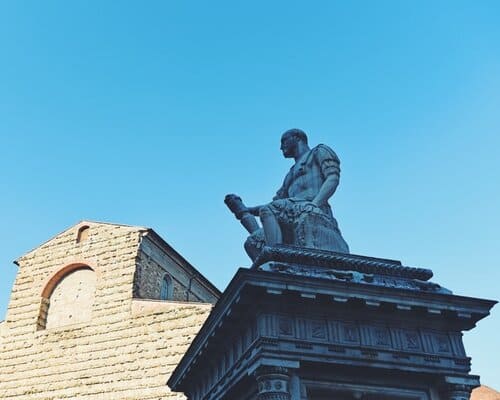
Installed in nearness to the Duomo, the Basilica di San Lorenzo was built under the plans of the amazing Medici family, who managed Florence for a long time during the Renaissance. Albeit not so amazing and fancy as the Duomo, this congregation is as yet a great structure. Its tremendous arch and trademark earthenware tiled rooftop. Inside the congregation is plenty of excellent work of art and design. It includes a gold and white overlaid roof and a greatly improved vault inside. Numerous frescos and figures outline the arch and make a fascinating blend of examples and tones. Besides, a lot of the Medici family are covered here and their burial places inside the house of prayer are very impeccable.
Find peace at Boboli Gardens (Giardino di Boboli)
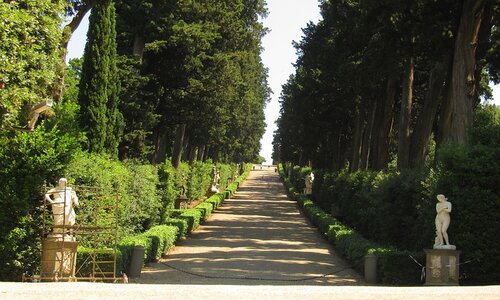
Assuming you’re searching for some green space however need to avoid the groups, there are a larger number of nurseries to meander through than simply the jam-stuffed Boboli. Walk through the olive forest or then again, in case you’re fortunate, visit during April when the grand purple wisteria curve is in blossom. Stunningly better, at the highest point of the florid flight of stairs, you’ll track down a similar view over the city however can appreciate it while tasting a glass of wine at the lovely little bar that is there.
Discover the Florence Central Market (Mercato Centrale)
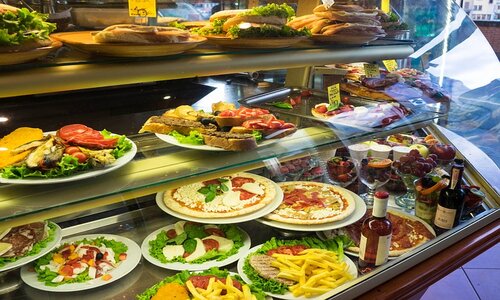
Avoid the inexpensive food that are springing up around the focal point of the town. And head inside the nineteenth-century Mercato Centrale. Here, you’ll discover merchants selling wine, organic products, meat, fish, cheddar, oil, and flavors on the ground level. Regularly visited by local people as much as travelers. The higher-up food court is an extraordinary spot for bunches that can never settle on what to eat. To truly partake in your supper here, take a stab at visiting outside the standard feasting times as it gets somewhat swarmed.
Oltrarno
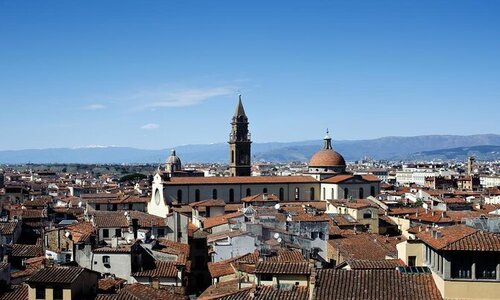
Florence might be one of the world’s most well-known objections all year. Yet even here, it’s feasible to encounter nearby life simply ventures from the primary attractions. Abandon the groups at the Duomo and meander over to Oltrarno, a dynamic neighborhood where Florentines have been hanging out for quite a long time. Loaded up with high-quality stores, workmanship displays, and stylish restaurants. Also, plentiful stops and gardens. It attracts travelers and nature fans the same.
Opera del Duomo Museum (Museo dell’Opera del Duomo)
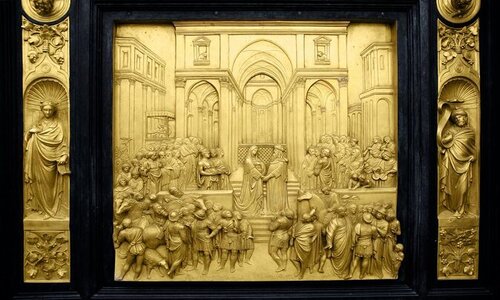
Opened in 1891, Opera del Duomo Museum houses artifacts and antiquities from Florence’s Duomo Cathedral. It includes Lorenzo Ghiberti’s unique entryways for the Baptistery of St. John, Donatello’s Penitent Magdalene sculpture, and the incomplete Florence Pietà that Michelangelo planned to cover his own burial place.
Inhale the fresh air at Arno River
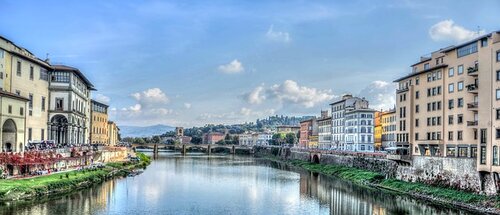
Visiting on river feels a smidgen more reviving than simmering under the Florence sun. Give a shot of paddleboarding on one of the most renowned streams on the planet. You’ll have a chance to pass under the eminent Ponte Vecchio and see the city as from the river. Extraordinary for those exhausted of galleries. This chance ought not to be missed, furthermore, you’ll have an incredible story and top-level photographs close behind.
Perseus Statue
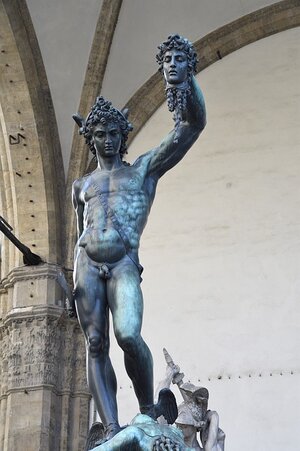
This Perseus, bought by Countess Valeria Tarnowska of Poland, is a copy of Canova’s acclaimed marble of Perseus in the Vatican. Also, considered around 1790 and first displayed in 1801. In light of the Apollo Belvedere, which had been stolen away to Paris under Napoleon it was purchased by Pope Pius VII. Then put upon the platform where the Apollo had previously stood. In the Museum’s rendition, Canova has refined the fancy subtleties and focused on a more expressive impact than in the Vatican Perseus. Medusa’s head depends on that of the antique Rondanini Medusa. Get a closer look by simply visiting the place.
Loggia Dei Lanzi
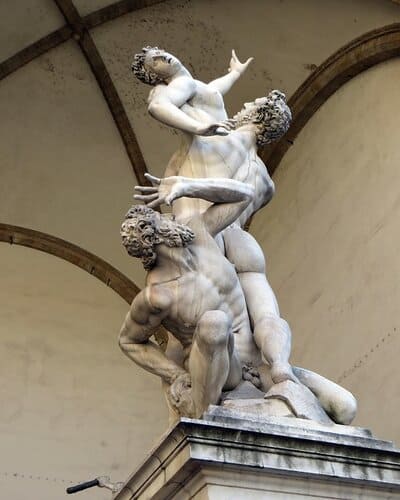
The rich loggia at the side of Piazza Signoria where it runs into the Uffizi is an outside workmanship exhibition. The dazzling construction was begun in 1376 and completed in 1382 by the Republic of Florence. It was put before the Palazzo Vecchio for urban services and congregations. The loggia has an arcade of three curves and is covered by a patio that was utilized by nobility and aristocrats as a rooftop garden for nights of music and dinners.
Florence Via Cavour (Via Camillo Cavour)
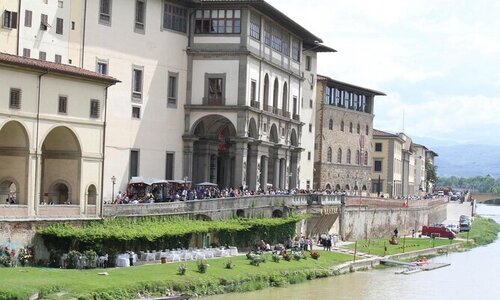
Via Cavour is one of the primary streets in the verifiable focal point of Florence, Italy. It was named in 1861 when two antiquated roads, Via Larga and Via San Leopoldo, were merged. Guests strolling down specific areas of the road should look carefully for plaques recognizing notable individuals who once lived here. Today it is a gallery of craftsmanship and design covering over 400 years of Florence’s set of experiences. Along Via Cavour, you will discover a lot of lodgings, cafés, and shops just as apartment complexes. You’ll see the Museum and Convent of San Marco. The street goes through Piazza San Marco as it travels north, in the end getting together with Piazza Della Liberta.
Sant’Ambrogio Market (Mercato di Sant’Ambrogio)
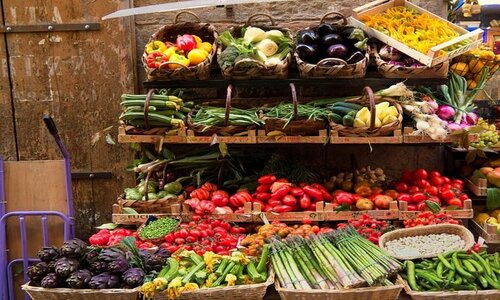
Sant’Ambrogio is perhaps the most seasoned locale of Florence, for the most part, visited by understudies and youngsters. The area is known to be home to the old ghetto of the town. The piece of Florence where the Jewish people group used to live. Also, one of the biggest in Italy. Still today this region is home to brilliant Jewish eateries and fascinating exhibition halls. Yet additionally has one of the main business sectors of the town.
Bargello Museum (Museo Nazionale del Bargello)
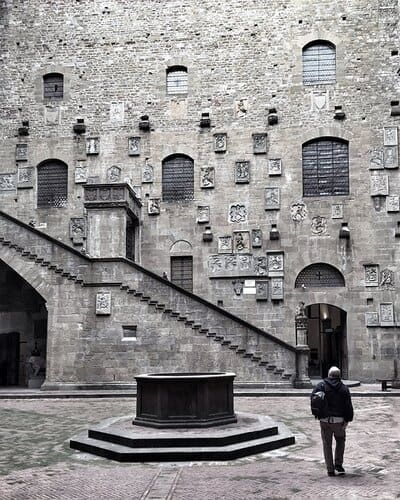
One more of Florence’s fine exhibition halls, the Bargello Museum contains a heap of Renaissance figures and fine art. Take a short stroll toward the upper east of the Piazza Della Signoria. The Museum is housed inside a structure that once filled in as a palace and fortress in the Middle Ages. You can in any case see the watchman tower and the crenelations. Inside the structure is a huge assortment of significant models including works by Donatello.
Fountain of Neptune
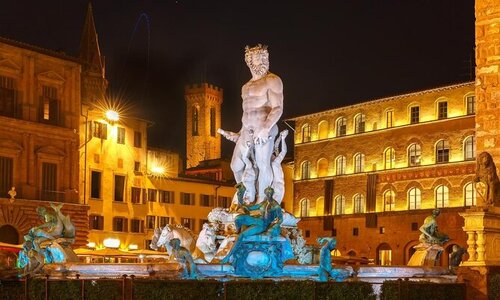
Also called “the White Giant,” this snow-white sculpture rises out of Piazza Della Signoria, a figure that is difficult to miss when entering the piazza. The unimaginable figure of Neptune, etched from white Carrara marble, is set on a focal platform in the octagonal bowl. This space additionally brightened with sculptures of Scylla and Charybdis. The incomparable God of the ocean is said to look like Cosimo I de’ Medici. The landmark was for sure the umpteenth portrayal of the Medici family’s significance. That is, an implication to the city’s sea domain.
Piazza di Santa Maria Novella
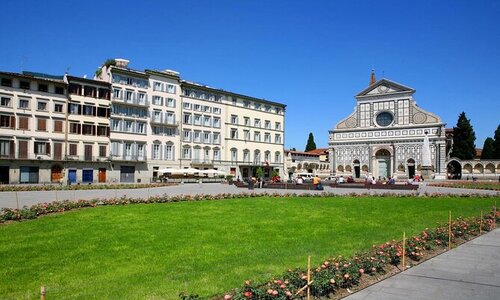
Church of Santa Maria Novella or Piazza di Santa Maria Novella is an exceptional construction that has a comparative plan to both the Duomo and the Basilica of Santa Croce. Another fine illustration of Renaissance design utilizing poly-chrome and white marble to make a striking front veneer. While the outside and encompassing Piazza are superb by their own doing, the inside is a genuine wonder as well. Held inside the congregation is a heap of sanctuaries devoted to different rich and conspicuous Florentine families during the Renaissance period. Point by point designs cover the dividers and roofs. The congregation contains work of art from well-known craftsmen including Botticelli and Ghiberti.
Leonardo Interactive Museum®
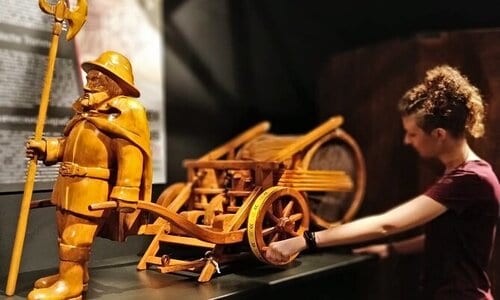
The vivid gallery takes a top to bottom excursion into Leonardo da Vinci’s designing and mechanical innovations. Peruse the intuitive life-size machines demonstrated after the creator’s unique draws. Also, see high-goal pictures of a portion of Leonardo’s most renowned masterpieces. Then, at that point, head to the studio and endeavor to develop Leonardo’s curved extension, arch, and polyhedrons. Book your ticket ahead of time to try not to stand by in a long queue to enter.
Pitti Palace Palatine Gallery
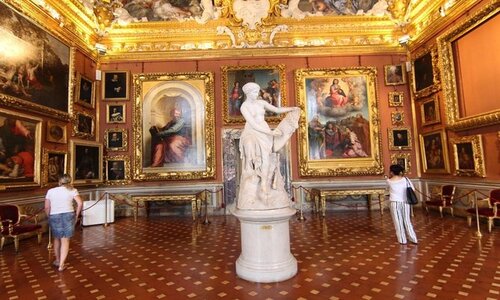
The Uffizi Gallery may stand out enough to be noticed. However, the Palazzo Pitti across the river is the biggest exhibition hall complex in Florence. The tremendous Renaissance castle itself has been owned by the Medici family. Also, utilized by Napoleon, and repurposed as home to King Victor Emmanuel III. Today you can visit rooms that house Renaissance compositions by Raphael, Titian, and Rubens. It is an assortment of fine European porcelain, Medici silver and adornments assortment, and more. An across-the-board ticket awards access to every one of the historical centers. Visit Museo Argenti, Galleria Costume, and Museo Porcellane, and the Boboli and Bardini Gardens.
Shop Luxury brands at Prada Outlet
The Prada outlet stocks the luxury brand’s clothing, beauty care products, shoes, and packs for men, ladies, and kids. Hope to discover profound limits on the whole stock, which centers around exemplary looks from this popular name. The most ideal way of visiting Space is by joining a shopping visit from Florence. It is about 20-30 minutes outside of the city. Many shopping visits incorporate a stop at the close by Gucci outlet or the Mall. It is an outlet place facilitating various Italian and global names including Armani, Pucci, Fendi, Burberry, and La Perla.
